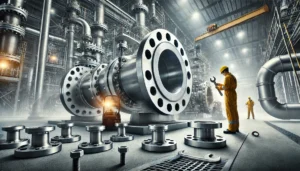Understand the basics: A check valve is more often than not a single directional, or one way valve that does not let the back flow occur. If there is an opposite impact or force the valve closes, and thus cut off any possibility for flow to happen in the reverse direction. This way, it keeps a delicate balance in a pipe system and works for a variety of pumps and compressors. Of course, there are other kinds of check valves that are present such as a swing verter version, which is literally self explanatory by its name as it literally moves in a sweeping motion.
What is a Check Valve and How Does it Work?
It is important to mention that all check valves and what they stem out from don’t require an elaborate setup and automation to work. Which incidentally what a check valve is, as mentioned is a back flow preventing valve but specifically only through a lever that has a rotational force to it. There are various types of check valves or commonly referred to as non return valves in the industrial sector such as ball and seat and lift valves.
What is a Swing Check Valve?
A Swing Check Valve is a type of check valve with a disc that swings. The disc is mounted on a top swivel so that it is able to rotate in the forward flow direction and close when the flow is reversed. This simple construction makes swing check valves appropriate for use in systems that have horizontal pipes and moderate rates of flow. Swing check valves also reduce pressure drop and promote effective operation due to their disc movement that enables easy fluid passage. Swing check valves are especially useful in systems that have low pressure and a more or less constant upstream flow. The hinge pin construction gives greater strength and assures positive shut off in case of back flow.
Key Differences Between Check Valves and Swing Check Valves
In their operations and use, however, the two do differ as a swing check valve is a type of check valve. Belek valves, ‘lift type’, ‘ball type’ and ‘tilting disc. Check valves are more generic and range from lifting, swinging and even ball action to control the flow. Swing check valves on the other hand uses a hinged disc that is free to swing open or closed to control the rate of flow. High pressure systems, as well as other applications, will find check valves useful while swing check valves apply best on horizontal piping systems having moderate flow rates. Furthermore, the pressure drop is low with the use of swing check valves, greater smoothness in flow and greater ease to service due to the swinging mechanism.
Conclusion
The necessity to use check valves and swing check valves is to guarantee a continuity of flow in one direction all through the pipelines. Other check valves have the preference of using various methods to suit specific uses, while swing check valves on the other hand, allow for the control of flow using a hinged plate. This along with their effectiveness and orientation make them best suited for use in most low pressure systems.
Induskart has a variety of valves like a swing check valve and other high-end check valves needed for your industrial purpose. All our check valves have proven to be efficient, safe, and very durable in any piping system where they are installed. Go through our range of products and allow us to assist in enhancing your daily business activities through the right industrial check valves.










